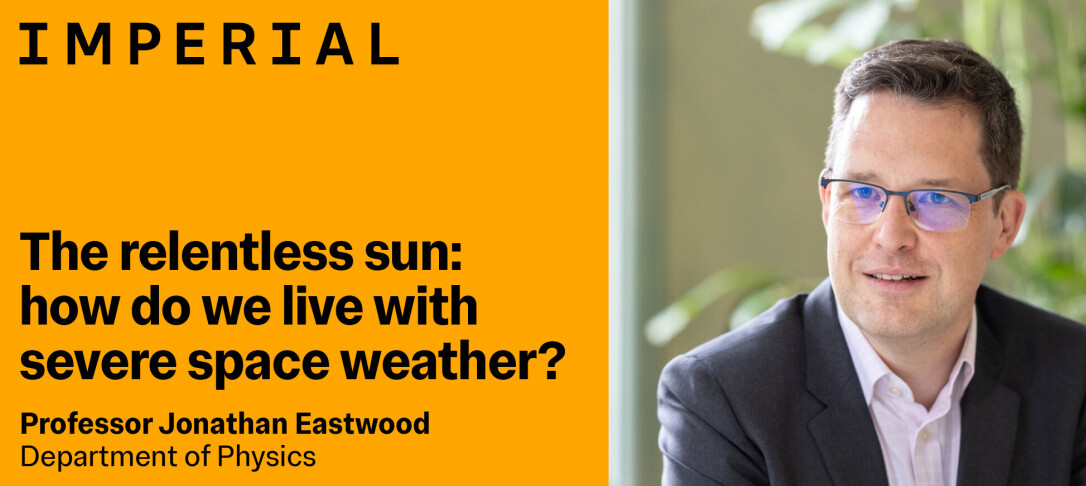
Join us for Professor Jonathan Eastwood’s Imperial Inaugural online or in person.
There is no need to register to attend so please be sure to use the add to calendar button.
We look forward to seeing you on Wednesday 21 May!
Abstract
You can’t stop the Sun. You can’t stop it sending solar flares, particle radiation, and coronal mass ejections in outer space. You can’t stop the geomagnetic storms that may arise in response, or the disruption to the Earth’s ionosphere. And you can’t stop the beautiful auroral displays in the skies above, or electric fields being induced in the surface of the Earth below.
Yet at the same time, we know all this activity has the potential to disrupt, or even break, our modern technological infrastructure, both in space and on the ground. We also know that that the likelihood of a truly severe space weather event is probably of the order of 1 in 100 years, that the last ‘big one’ was in the mid-19th century, and that the potential for far-ranging socio-economic impact is considerable. So, what do we do?
Jonathan Eastwood is a Professor of Space Physics, Imperial Global USA Academic Theme Lead for Space and Satellite Technologies and convening co-director of the School of Convergence Science in Space, Security and Telecoms at Imperial College London. At Imperial, he leads a programme of research is dedicated to understanding and answering this question. In his inaugural lecture, he will explain the science behind space weather, why it matters to you, and what we are doing to make sure we are ready for the severe space weather events of the future.
Biography
Jonathan Eastwood is a Professor of Space Physics and convening co-director of the School of Convergence Science in Space, Security and Telecoms at Imperial College London. At Imperial, he directs a programme of research that fuses blue-sky and challenge-led thinking to understand what space weather is, and what we should do about it. This work involves the construction and flight of space instrumentation, the development of novel computer simulations for space weather modelling and prediction, and foundational basic research into space plasma physics.
Jonathan leads the consortium delivering the magnetometer instrument for the upcoming ESA flagship space weather mission, Vigil. He also leads an instrumentation programme creating a series of highly miniaturised magnetometer instruments for space weather monitoring, one of which successfully flew on the RadCube CubeSat, with future flights on the HENON CubeSat, as well as the ERSA payload that is planned to fly on the Lunar Gateway. In computer simulations, he leads the ongoing development of the GorgonOps space weather model, collaborating with colleagues at Imperial to translate simulations developed for laboratory plasmas into the space domain. These models are now available at the Met Office in the UK, and as part of the ESA Space Safety programme, where they are contributing to new forecasting capabilities. In his research into space plasma physics, Jonathan is proud to particulate in multiple ESA and NASA missions including Cluster, THEMIS, STEREO, Magnetospheric Multiscale, Solar Orbiter, and Parker Solar Probe.
Jonathan received both his MSci degree and PhD in space physics from Imperial College London. As well as Imperial, he has also worked at the University of California, Berkeley, and NASA Goddard Space Flight Center, where he held a National Research Council Resident Research Associateship.


